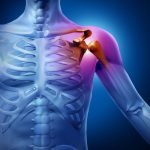Art-Based Mindfulness Helps Reduce Headaches in Teen Girls
Node Smith, ND
Teenagers report higher levels of stress than adults, and cite school as the highest contributing factor, according to the American Psychological Association’s annual report. A summary from 2013 concluded that while stress among Americans was not new, “what’s troubling is the stress outlook for teens in the United States.”
Stress outlook for teens in the United States is troubling
In response, recently some schools have turned to mindfulness-based programs as a way to alleviate stress among their students. These programs could benefit from more research into what activities students find most useful.
In a pilot study led by the University of Washington, researchers explored art-based mindfulness activities that schools could use to reduce headaches, a common side effect of stress in adolescent girls. The test group of eight teenage girls gave feedback on which activities they preferred.
After three weeks of twice-weekly mindfulness and art therapy sessions
After three weeks of twice-weekly mindfulness and art therapy sessions, the girls reported experiencing significantly fewer headaches. At the beginning of the study, the girls reported 7.38 headaches, on average, within the previous two-week period. At the end of the study, that number had dropped to 4.63; almost a 40% decrease. This drop remained even seven weeks after the study had ended. The researchers published their findings May 22 in the journal Art Therapy.
Study highlights one of the main research missions
This study highlights one of my main research missions: We should be making interventions in cooperation with teenagers if we want these strategies to work. There’s something powerful about saying ‘I’m inviting you to start thinking about how you could get better. Come have a conversation with me about how we could do this.’ I think that’s why we saw such a strong response even in this tiny study,” said Corresponding author Elin Björling, senior research scientist in the UW’s human-centered design and engineering department.
Team recruited eight girls between the ages of 14 to 17
The team recruited eight girls between the ages of 14 to 17 from a high school in Seattle. All of the participants reported experiencing three or more headaches not related to an injury within a two-week period, and five of the eight mentioned tension or stress as the main reason for headaches.
Students met twice a week for a 50-minute session with the research team
During the program, the students met twice a week for a 50-minute session with the research team. Each session began with an activity in which students would map where they were feeling stressed on a drawing of a body. Then the teens would participate in mindfulness and art activities before closing the session with another body map.
“After the study, we looked at all the before and after body maps side by side. It was so clear that something significant was going on,” Björling said. “In the beginning everything was in pieces, and in the end everything was flowing through the whole body.”
Teens tried different mindfulness techniques in each session
The teens tried different mindfulness techniques in each session so they could find which ones worked the best for them.
What teens liked
What teens liked: square breathing, a technique that encourages people to take slow breaths by concentrating and counting.
“I thought: ‘No teen ever wants to do counted breathing, and they’re never going to do it,'” Björling said. “But a few of them said ‘That’s my favorite. I do it all the time now.'”
What teens didn’t like
What teens didn’t like: mindful eating, a technique that asks people to focus on what and how they’re eating.
“They hated it,” Björling said. “This was a technique straight out of a lot of mindfulness programs for teens, but it didn’t connect with them. It just annoyed them. It goes to show I need them to be experts in their own lives.”
Students also participated in different mindful art activities
The researchers also asked the students to participate in different mindful art activities. During each session, the students tried a new art medium; they particularly liked using oil pastels; and different types of art therapy projects, including one where they worked together to create mandalas before and after a meditation exercise.
While the teens experienced fewer headaches after the study ended, their overall stress levels didn’t change much. But the students reported feeling better in the moment, saying that they felt like they could handle whatever happened for the rest of the day.
The team was surprised to see any differences, given the small size of the group
“It’s not just about this study,” Björling said. “This problem of teen mental health and headaches is so big that I’m worried about what happens if we don’t take it on. Some teens will want nothing to do with art mindfulness. So we need to come at this in lots of different ways. We’re going to need an army of people and a cornucopia of options.”
Source:
1. Björling, E.A. et al. (2019) Participatory Pilot of an Art-Based Mindfulness Intervention for Adolescent Girls With Headache. Art Therapy. doi.org/10.1080/07421656.2019.1609325
 Node Smith, ND, is a naturopathic physician in Humboldt, Saskatchewan and associate editor and continuing education director for NDNR. His mission is serving relationships that support the process of transformation, and that ultimately lead to healthier people, businesses and communities. His primary therapeutic tools include counselling, homeopathy, diet and the use of cold water combined with exercise. Node considers health to be a reflection of the relationships a person or a business has with themselves, with God and with those around them. In order to cure disease and to heal, these relationships must be specifically considered. Node has worked intimately with many groups and organizations within the naturopathic profession, and helped found the non-profit, Association for Naturopathic Revitalization (ANR), which works to promote and facilitate experiential education in vitalism.
Node Smith, ND, is a naturopathic physician in Humboldt, Saskatchewan and associate editor and continuing education director for NDNR. His mission is serving relationships that support the process of transformation, and that ultimately lead to healthier people, businesses and communities. His primary therapeutic tools include counselling, homeopathy, diet and the use of cold water combined with exercise. Node considers health to be a reflection of the relationships a person or a business has with themselves, with God and with those around them. In order to cure disease and to heal, these relationships must be specifically considered. Node has worked intimately with many groups and organizations within the naturopathic profession, and helped found the non-profit, Association for Naturopathic Revitalization (ANR), which works to promote and facilitate experiential education in vitalism.
Node Smith graduated from the National University of Natural Medicine (NUNM) in 2017, and is currently licensed as a naturopathic physician in Oregon and working towards becoming licensed in Saskatchewan, Canada as well.










